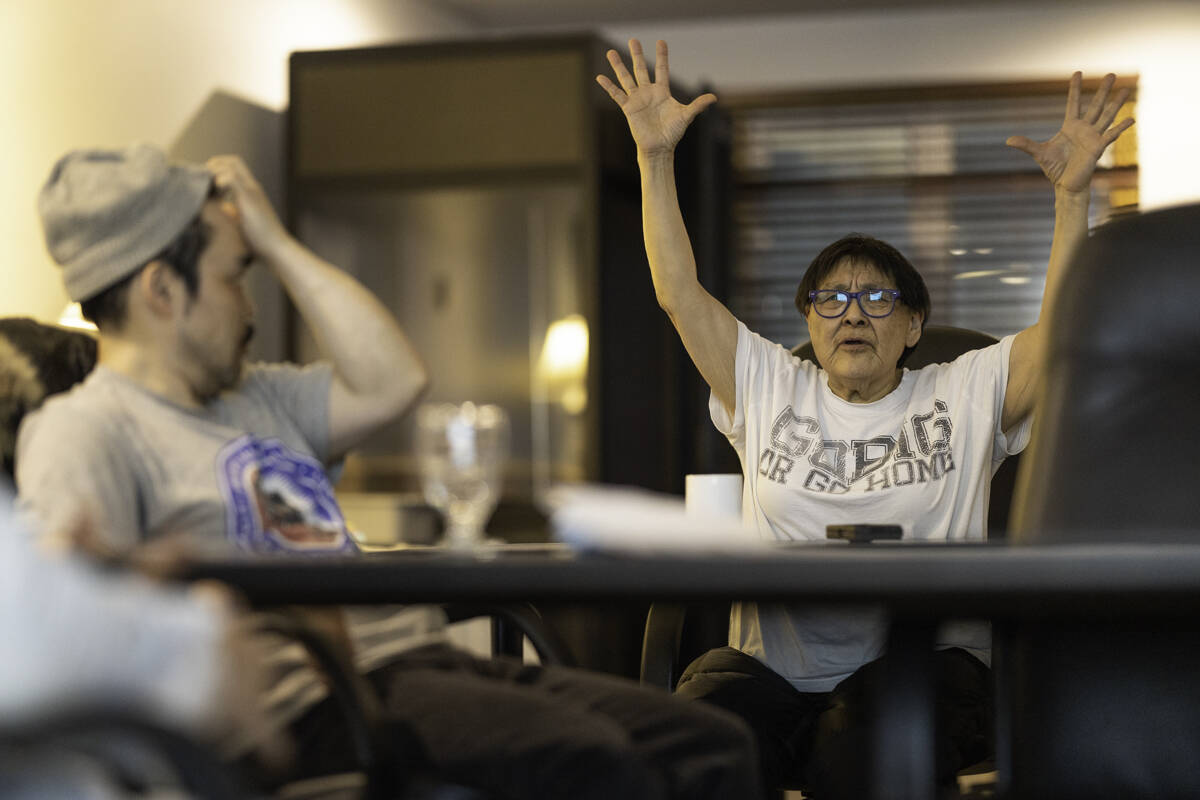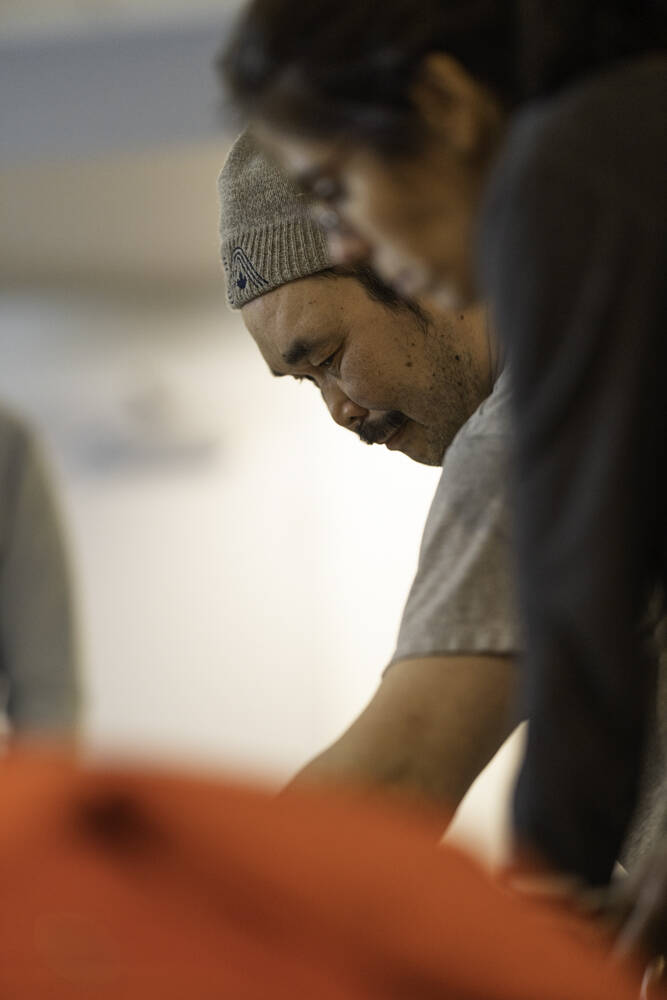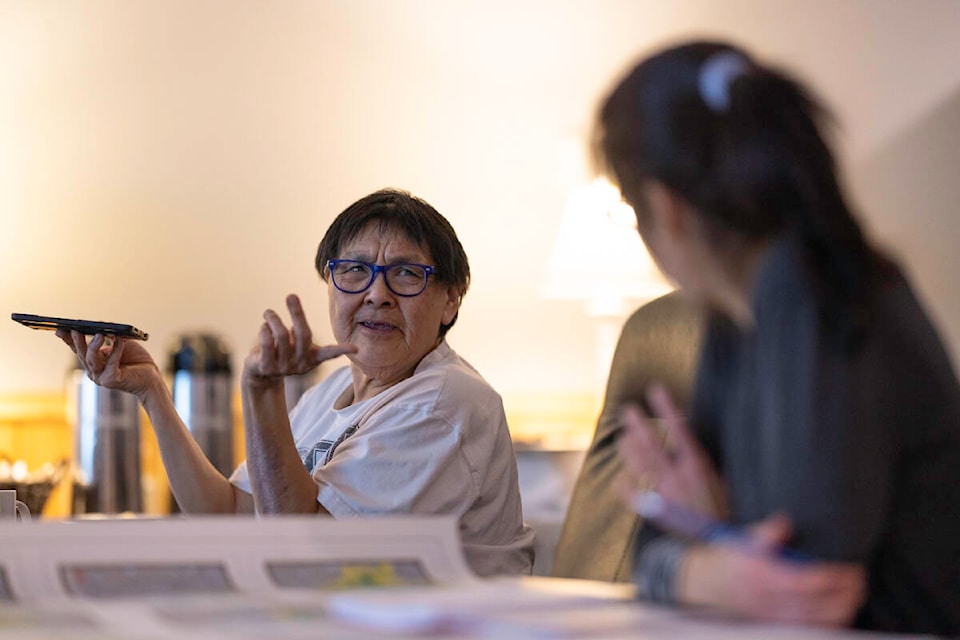No one will be able to say that ValOre was unaware of community concerns regarding the company’s Angilak uranium mining project near Baker Lake.
An open house consultation in Rankin Inlet on March 14 saw only two Rankinmiut take part – Andrew Akerolik and Mary Rose Angoshadluk – but they kept ValOre representatives busy taking notes and hearing about potential pitfalls their company could run into.
The 66,435-hectare property is named after a nearby lake, and ValOre has invested over $55 million into it since acquisition, mostly on exploration, logistics and resource delineation work.
A drop in the price of uranium in recent years kept the project to the sidelines, but a recent rise in prices has spurred on investment in the company, which is now pursuing exploratory drilling.
“Discovery potential at Angilak is significant, providing excellent potential to add value with an upward move in uranium prices,” writes the company’s website about the property.
Colin Smith, vice-president of exploration with ValOre, said the property has been worked for a number of years by several different companies, with ValOre being involved since 2007.
There has been no mining or development on it to date, as the project remains in the exploratory phase.
Of chief concern for Angoshadluk and Akerolik at the meeting were the company’s communication, as the two suggested they hire at least one community liaison officer to keep locals informed and in touch about what’s planned.
“If they’re coming up to do some exploration, I think it’s best to have – even if it’s hiring for a couple months or a couple years – a community liaison officer, because not a lot of us listen to radio or not a lot of us go to Facebook,” said Angoshadluk after the two-hour open house. “Somebody that’s going to go out there and let the public know.”
She and Akerolik suggested the company hold regular open houses, even monthly or quarterly, but ValOre representatives indicated they might not be able to come to the Kivalliq themselves that frequently and suggested video conferencing as a possibility.
The two also emphasized a desire to be told the truth by ValOre about the company’s plans, saying the community needs to be able to trust the company and not be told empty promises. They added that these concerns are not only about the environment, but about respecting the communities involved.
Smith said the company would be doing initial drilling in April this year with about 30 holes, and another 30 holes in September. About 35 to 40 people will be on site during the peak work times.
In the time between, an independent third-party environmental company would be studying the lake water, while ValOre did more mapping, prospecting and sampling.
Akerolik said September was a high time for caribou hunting and suggested moving the drilling time earlier, as well as limiting the use of helicopters, which can scare and stress caribou.
Following the meeting, Angoshadluk said “communication is the biggest key” and expressed optimism about the company.
“To me, they look like a promising company,” she said. “I finally spoke with somebody from down south that came up here … because we have never ever had that chance to say, ‘Look, you need to get this liaison officer. You need to talk to the hunters.’ That’s the first I’ve heard in a long, long time and I’m a resident of Rankin for the past 50 years.”
For Akerolik, he wishes more people showed up and the event had been advertised better.
“I just wish there was more community members attending it,” he said. “It really helps when the community members speak up, have their say and concerns.”
He added that the company shouldn’t be having separate meetings with different governments and organizations in the community, and that all the discussion should be under one roof, saying that kind of open communication limits the spread of rumours and keeps people updated.
“I hope when there are more community consultations, more people attend, and also for exploration companies to put up posters and advertise more ahead of time instead of just last minute,” he said.
Following the Rankin Inlet meeting, ValOre held similar consultations in Baker Lake and Arviat.
Smith said all the community consultations went well.
“It was a good opportunity just for us to introduce ourselves and get people familiar with our company and who we are and what we will be doing as an exploration company,” he said, adding that there can be miscommunication if there’s not adequate communication.
The wheels are in motion to potentially hire a community liaison officer, he added.
“We’re not just going up there to tick a box and say we’ve done it,” said Smith the following Monday, March 21. “We really take it seriously and we already are taking actions to follow up on some of the recommendations that were laid out by the communities.”
Going from an exploratory project to full-scale mining operation could still take decades, he added. In the meantime, he looks forward to working with Kivalliq communities as exploration progresses.
“The success of our program really will come because of the knowledge and experience of the people who live in Nunavut,” said Smith. “We want to work safely for them.”


